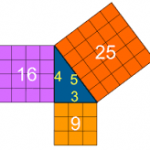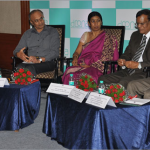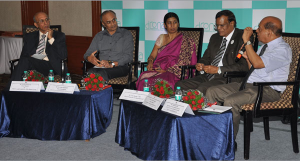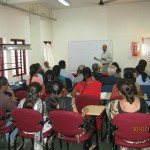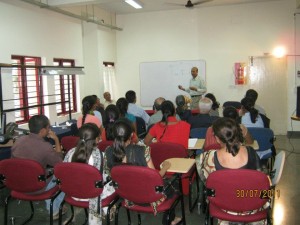Prime Minister’s ‘Start-up India, Stand up India’ initiative can succeed only when the focus in our colleges shifts towards creating and owning intellectual property. Creativity is a talent nurtured right from childhood. Various types of arts, crafts and hobbies expose a child to a variety of skills that develop creativity. Design, per se, need not always involve either creativity or innovation. It is only when creativity is embedded into the art of design that innovation happens. Innovation can also result from a strong desire to find new or improved solutions to existing problems. However, this talent is reinforced by a creative aptitude. A combination of all these characteristics is what actually results in innovative designs, products and services—some of which can be revolutionary.
It is, therefore, obvious that innovative engineers cannot be created overnight. The process has to be part of an integrated system which includes parents, teachers, schools, colleges and industries—all of which encourage inquisitive curiosity with practical exposure, leading to development of interest, aptitude, skills and aspirations to excel as a practicing engineer.
The reason that barely 7% of the approximately 1.5 million engineers graduating every year in India are employable in core engineering sectors is the absolute lack of aspiration. They get into an engineering college—or a medical college, for that matter—only because of peer and parental pressure, and not out of desire or deep interest. If their ultimate evaluation is also based on rote-based learning and marks obtained, we are neither inculcating in them the “ability to learn” nor practical capabilities that are relevant to a prospective employer. “Learning to learn” and “learning to apply” should, therefore, be the cornerstones of education, be it engineering, medicine, accountancy or management.
Design, innovate & make in India: The Prime Minister is charming young students by ‘Make in India’ and ‘Start-up India, Stand up India’ initiatives. However, we need to not just make in India, but create in India, design in India and innovate in India, so as to create and own intellectual property. What we need is a solid design and manufacturing base to enable these initiatives to succeed. However, without competent engineers to drive these programmes, how can the campaigns even take off—whether in aerospace, defence or consumer sectors? For this, we need to skill our engineers not just as computer operators, but also as intelligent designers and engineers in practice.
The core of all these will be effectively addressing our flawed education system—right from primary school to the highest education. If we need to create, innovate and design, we need performing engineers, doctors and scientists who are capable of designing products, or can at least reverse engineer like the Chinese, and then innovate further.
Design & innovation: Design skills lie at the top of the pyramid, which include a variety of multidisciplinary abilities. Creative design requires the essential powers of creative, analytical and critical thinking.
Skilling cannot happen only in a college environment. Universities and engineering colleges need to tie up with industries to provide the engineers hands-on exposure to “live” projects within the industry.
So, what should be the action plan for educators? Or, in other words, how can engineering students create and innovate in the next year or two?
Foundation: Educators need to start the process with first-year students. The laying of strong fundamentals forms the foundation, on which the superstructure of “engineering practice” can be built. Fundamental concepts can be better grasped by students when they are explained with the help of simple, practical, everyday examples of theory.
Innovation: It is then possible to climb the ladder of innovation step-by-step, by teaching students how to think and create, starting with simple hands-on projects that are made by students as early as the very first semester.
Action plan for students: For students, the motto should be “empower yourself to learn”. It is not easy to overhaul the engineering education system. Yet we occasionally read about a handful of students who have created a gadget for the farmer, or a solar-powered vehicle, etc. How did these students achieve the same, in spite of being part of the same system? They educated themselves outside the “syllabus” and college routine. Engineering students need to read the latest journals, magazines and information online in the core sector of their choice—be it electronics, mechanical, chemical or any other. Project work today is considered a dreary chore, to be completed by hook or crook to qualify for a degree. So as to become a creative engineer, students need to break out of this mindset. They need to develop the interest to try and make simple projects themselves, learn from mistakes through analysis, and finally succeed in creating a simple project. This exercise itself is bound to provide a lot of pleasure and excitement, besides providing invaluable educational insights about the subject. Ultimately, these very habits—of keeping oneself abreast of developments, of working with one’s hands and trying out an idea in practice—are the ones that will stand them in good stead throughout their career. Indian students can certainly innovate and create in the next two years, by using their imagination and practical experimentation to create products and solutions for everyday life.
The original article appeared on Financial Express.


